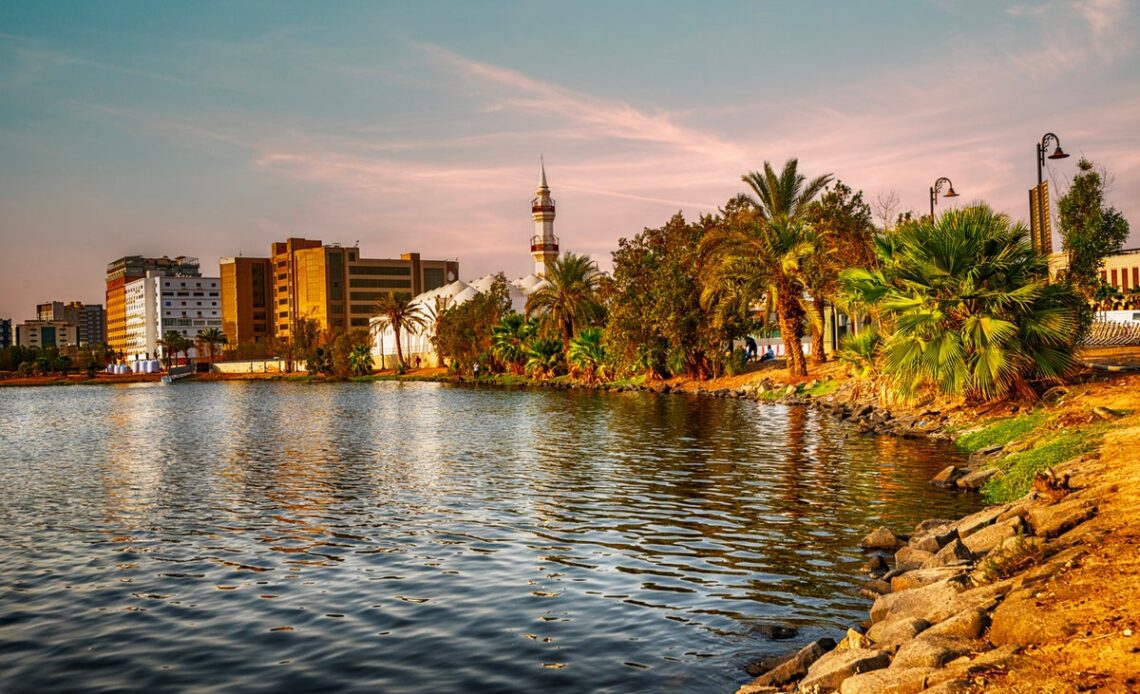Perhaps most famous as the gateway to Islam’s holiest site, Jeddah is visited by millions every year for Pilgrimage.
But while Saudi Arabia’s second city has been visited by pilgrims from Asia, Africa, Europe and the rest of the Middle East since the 7th century, it has only recently begun to welcome non-religious visitors, with the country’s government issuing its first tourism visas in 2019.
And Jeddah is in prime position to benefit from the drive to increase tourism. Centred around a remarkable and characterful Old Town district, it stretches for miles along the Red Sea, providing a plethora of pristine beaches and a modern waterfront promenade area.
Its streets house a number of traditional markets, city-focused museums and contemporary art galleries, while sports fans can enjoy football matches in between adrenaline-fuelled activities ranging from jet skiing to dune buggy rides. Here’s our pick of the most compelling reasons to visit Jeddah.
Great weather all year
The Al Rahma Mosque is also known as ‘The Floating Mosque’
(Getty Images)
Jeddah has a warm, arid climate with an average of just 61mm of rain per year spread out over a handful of days. Even in winter, average highs range between 29C and 33C, with lows of 19C in January and February. It’s definitely best to visit between October and April if possible, as summer temperatures may become sweltering; average temperatures in July and August lie at 33C, with highs hitting around 38C.
A remarkable Old Town
Al Balad translates to ‘town’ in English
(Getty Images)
Known locally as Al-Balad, the historic centre of Jeddah is one of just five Unesco-listed sites in the entire country. It has been one of Saudi’s more cosmopolitan areas ever since it was made the gateway to Mecca and has consistently welcomed visitors and settlers from around.the world.
Nowadays, this part of Jeddah is characterised by its Red Sea architecture. Many tall towers still stand – built from limestone and coral – and feature rawashins and mashrabiya, wooden bay structures with carved lattices that served either as decorative balconies or as extra windows to cool the buildings down. Many of these have been restored and now house museums, galleries and modern merchants, while a walk around the tight-knit alleys will take you past various cafes, shops, ancient houses and seven souks,…
Click Here to Read the Full Original Article at The Independent Travel…
